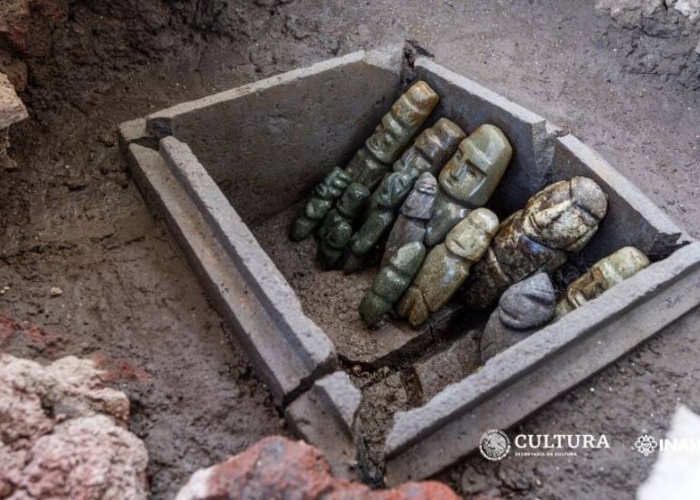A recent excavation in Mexico City has brought to light a collection of stone carvings potentially used by the Aztecs as divine offerings. The findings were uncovered at the former site of Templo Mayor, once the religious heart of the Aztec capital, Tenochtitlan.
The Findings: Unveiling the Stone Effigies
The archaeological team discovered the small trove of stone figures within a stone box located at Templo Mayor. In total, 15 effigies were unearthed—14 of them male and one female. These carvings, which range in height from just over an inch to nearly a foot, were crafted from green metamorphic stone and are characteristic of the Mezcala style. The Mezcala was a Mesoamerican civilization that once lived in the Guerrero region, renowned for their stone artwork dating back to as early as 500 B.C.E. Aztec ruler Moctezuma Ilhuicamina, who reigned from 1440 to 1469 C.E., had ordered that valuables be buried in the temple complex to symbolize the wealth of territories conquered, pointing to the high esteem in which Mezcala artifacts were held.

According to archaeologist Leonardo López Luján, the effigies were most likely appropriated as war spoils when the Aztecs conquered the region. Some of the figures are believed to be over 1,000 years old and initially served as religious effigies for the conquered people. Further analysis reveals that the Aztecs may have repurposed these statues for their own rituals. For instance, one figure was painted to resemble Tlaloc, the Aztec god of rain. Alongside the effigies, the excavation team found snake-shaped earrings, beads, and other calcareous materials like shells and snails, all collectively termed “Offering 186.”
This groundbreaking discovery supports a pattern observed in other findings at Templo Mayor, adding another layer to our understanding of Aztec culture and their integration of conquered people’s artifacts into their own religious practices. Further excavations are planned, as researchers believe more such offerings are yet to be discovered.